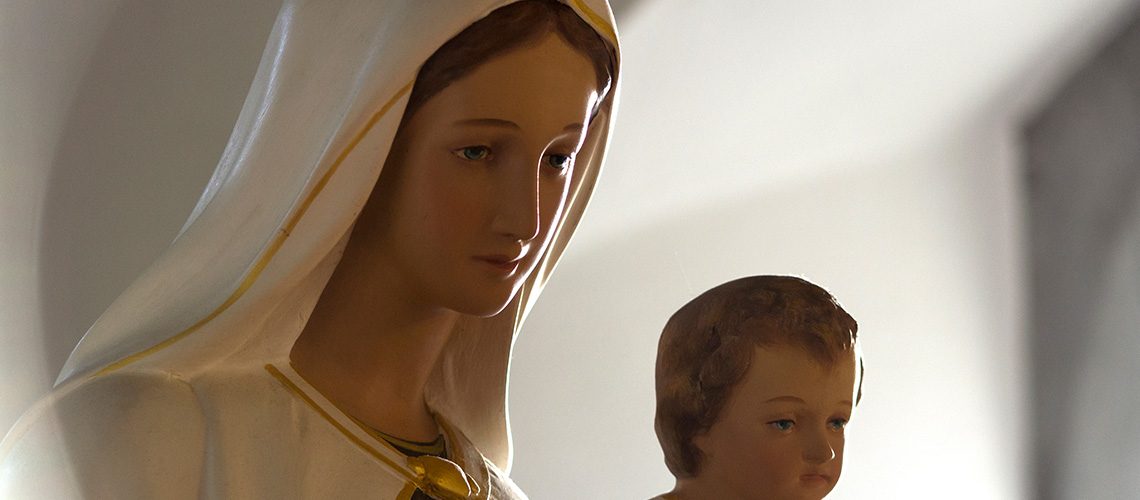Early History
The first Carmelites on Mount Carmel lived as hermit-brothers. Around 1207, they were given a Rule by St Albert, Patriarch of Jerusalem. The Rule specified that there be an oratory in the middle of the hermit cells; the brothers chose to dedicate this chapel to St Mary. She thus becomes the Lady of the Place. In medieval culture this amounted to choosing Mary as Patron: Carmelites will serve her; she will look after them. When those early Carmelites were forced to come to Europe, after the fall of the Latin Kingdom of Jerusalem, they found there already a rich culture of devotion to Mary. Soon afterwards, Carmelites were called ‘Brothers of the Blessed Virgin Mary of Mount Carmel.’ By the end of the 14th century the Carmelite family looked to two inspirational figures, Mary and Elijah. They were its foundational figures in the sense that all that the Order wanted to be was embodied in the lives of the Prophet and the Mother.
The Carmelite Tradition
When we survey the rich Marian tradition of Carmel, we might summarise it by saying that Mary is a gentle presence, always there with the Carmelite. Sometimes we relate to her as Mother, at other times as Sister, Patron or Model. One of the more popular titles for Mary in the Carmelite tradition is Mother and Beauty of Carmel. A vision of her beauty can be refreshment for us in our sometimes-harsh world. There are five aspects of Mary exemplified in in the Carmelite spiritual tradition. These are not exclusive to the Carmelite tradition, but they show its preferences in reflecting on the Mother of God.
Firstly, Mary is Mother. Carmelites received this Church teaching with great enthusiasm. As ‘Mother’ the Carmelites experience Mary as the one who nurtures the divine life in us and encourages us to follow the way of her Son, Jesus Christ: ‘Do whatever he tells you’ (John 2:5).
Secondly, Mary is Patron of Carmelites. This is a medieval concept that implies a two-way relationship between lord and servant: the lord protected his servants; they in turn looked after his interests. Such a concept fitted admirably the Carmelite vision of Mary as one whom they loved and served, and who in turn protected them, especially in difficult times.
Thirdly, Mary is Sister of Carmelites. When we speak of Mary as Sister, we are reminded that she too is one like us, is a daughter of Adam, and that she had to walk the same path of faith, hope and love. The Carmelite idea of Mary as Sister can also have something of the notion of the older, caring sister. An older sister is often someone in the family in whom we can confide; someone who listens well and accompanies us in moments of difficulty. At different times we may be more drawn to the idea of Mary as Sister, rather than as Mother. Both are legitimate, but we should not deny the validity of a title that may not attract us at a particular time.
Fourthly, Mary is the Most Pure Virgin. This title, very common in Carmelite saints and writers, looks especially to Mary’s purity of heart. She retained God’s word in her heart (see Luke 2:19, 51) and she served him with an undivided and pure heart.
Fifthly, Mary is a Model for Carmelites. We can look at what she did and go deeper by seeking to adopt her attitude in all our thoughts and actions.
The Brown Scapular
The Brown Scapular, since medieval times, has been a sign of affiliation or association with the Order. The story of its origins is far less significant than its approval by the Church over the centuries. A document of the Holy See on popular devotions (2002) states: ‘It is an external sign of the filial relationship established between the Blessed Virgin Mary, Mother and Queen of Carmel, and the faithful who entrust themselves totally to her protection, who have recourse to her maternal intercession, who are mindful of the primacy of the spiritual life and the need for prayer.’ (n. 205)
Presence
Devotion to Mary is not primarily a matter of saying more prayers to her. It is about a relationship with her, which will be maintained through prayer and reflected in imitation of her. There is a huge difference between knowing about a person, and really knowing them. Renewal in our Marian life is not a matter of prayers or information, but a loving knowing. Such a knowing loving, or loving knowing, lies behind the idea of presence. We know that we are always in the presence of God, who sustains us, keeps us in being. But we may not be alert to this presence as we go about our daily lives. It is good to stop occasionally and reflect that we are always in God’s presence.
The gentle presence of Mary is found in her caring for all the Church, in her continuous prayer for us, ‘now and at the hour of our death’ (Hail Mary). We can become aware of her presence if we think of her now and again, speak to her, ask for her guidance, and consider how she would act in the circumstances in which we may find ourselves. We can go further and enjoy and relax in her presence. Every age in the Church finds new insights into God’s plan unfolded in the Mother of the Son of God.
“Grant to your servants we beseech thee O Lord, unfailing health of mind and body, and through the intercession of the glorious and ever blessed Virgin Mary, may we be saved from present sorrow and enjoy future happiness.”
– Carmelite Constitutions 1281.



